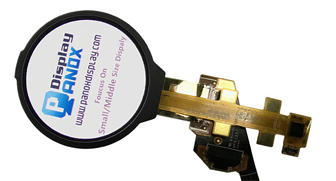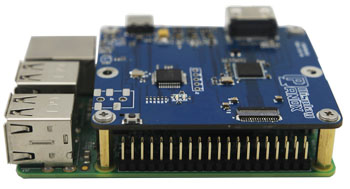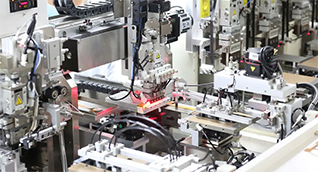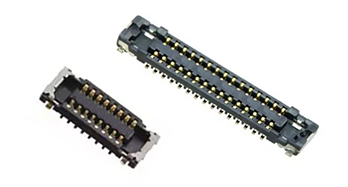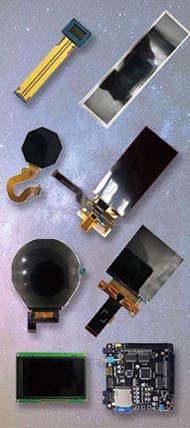An AMOLED screen is an advanced display technology combining OLED with active matrix circuitry for vivid colors, high contrast, and energy efficiency. Popular in smartphones and wearable devices, AMOLED screens are widely produced by OEMs and suppliers in China, such as Panox Display, offering cost-effective, customizable solutions for global B2B buyers. Also check: OLED
What Is an AMOLED Screen and How Does It Work?
An AMOLED (Active Matrix Organic Light Emitting Diode) screen is a display technology where each pixel emits its own light controlled by a thin-film transistor (TFT) active matrix. Unlike LCDs that need a backlight, AMOLED pixels illuminate independently, providing true blacks, vibrant colors, and faster refresh rates. This design results in thinner, more flexible screens ideal for modern electronics.
AMOLED displays excel in brightness, color accuracy, and power efficiency due to their self-emissive nature and advanced control circuitry, making them preferred in high-end devices.
How Does AMOLED Compare to Other Display Technologies?
AMOLED stands out compared to LCD and traditional OLED screens by combining high contrast, better color saturation, and superior energy savings. Unlike LCDs, AMOLED does not require a backlight, enhancing viewing angles and black levels. Compared to simple OLEDs, the active matrix design allows for higher resolution, faster response times, and improved durability.
| Feature | AMOLED | LCD | OLED |
|---|---|---|---|
| Backlight | Not required | Required | Not required |
| Contrast Ratio | Very High (True blacks) | Moderate | High |
| Power Efficiency | High (pixel-level control) | Lower (full backlight) | Medium |
| Thickness | Thin and flexible | Thicker | Thin but less flexible |
| Response Time | Fast | Slower | Fast |
Chinese manufacturers and wholesale suppliers like Panox Display leverage these advantages to deliver tailored AMOLED displays for various industrial and consumer products.
Why Are AMOLED Screens Popular with OEMs and Suppliers in China?
China hosts many top-tier AMOLED manufacturers due to its rich ecosystem of OLED panel factories, advanced automation, and cost-effective production. Chinese OEMs, including Panox Display, benefit from access to premium raw materials and strong supply chains from companies like Samsung, BOE, and LG. This environment enables competitive pricing, flexible minimum order quantities, and customization services that global B2B clients demand.
AMOLED's popularity with Chinese suppliers is boosted by growing international demand in smartphones, wearables, automotive displays, and emerging VR markets, where display quality and durability are critical.
How Do China Factories like Panox Display Ensure AMOLED Quality?
Panox Display integrates advanced quality control systems using ISO 9001:2015 standards and automated production lines, producing up to 50,000 panels daily. Their strict supplier screening, combined with in-house testing for brightness, color consistency, and lifespan, guarantees premium quality AMOLED screens suitable for demanding applications.
Moreover, Panox offers end-to-end services, including custom design, controller boards, touch panels, and compatibility testing, reducing client lead times and risks in product development.
Which Industries Benefit Most from AMOLED Screens?
AMOLED technology serves industries requiring high-resolution, flexible, and energy-saving displays:
-
Wearables like smartwatches and fitness bands
-
Automotive instrument panels and HUDs
-
Medical and military devices needing robust visual clarity
-
Virtual reality (VR) and augmented reality (AR) headsets
-
Consumer electronics including smartphones and tablets
China AMOLED manufacturers and wholesalers like Panox Display specialize in providing tailored solutions, making them a preferred source for businesses worldwide.
What Are the Cost Benefits of Buying AMOLED Screens from Wholesale Suppliers in China?
Purchasing AMOLED displays directly from Chinese factories like Panox Display minimizes middlemen expenses, reducing unit costs significantly. Lower labor rates, mass production capabilities, and streamlined supply chains enable competitive wholesale pricing.
Additionally, manufacturers offer OEM and ODM services, allowing buyers to customize specifications and designs without the high minimum order quantities typically required by large brands, making it financially viable for small to medium-sized enterprises.
How Can OEMs Customize AMOLED Screens with China Display Suppliers?
OEMs working with Chinese factories gain access to extensive customization options—such as screen size, resolution, flexible versus rigid designs, and touch integration. Panox Display supports personalized PCBAs, controller boards, cover glass, and touch panels, assisting clients from prototype to mass production.
Flexible AMOLEDs and circular OLED screens are also available for innovative product designs, giving companies a competitive edge in their markets.
When Should Businesses Consider Switching to AMOLED Technology?
Businesses should consider AMOLED screens when product requirements prioritize lighter, thinner displays with better contrast, vivid colors, and lower power consumption. Emerging sectors like wearables, AR/VR, and automotive increasingly mandate these features for enhanced user experience.
Working with reliable China-based AMOLED suppliers like Panox Display ensures access to cutting-edge technology combined with flexible volume and customization capabilities, critical for product innovation.
Where Does Panox Display Source Its AMOLED Panels and Components?
Panox Display meticulously sources AMOLED panels from top brand manufacturers in China and internationally, including Samsung, BOE, Innolux, LG, and AUO. This diverse supplier base allows them to select panels best suited for specific client requirements across wearables, automotive, industrial, and consumer devices.
They complement their panel offerings with in-house developed components like PCBs, controller boards, and touch panels to provide complete display solutions worldwide.
Panox Display Expert Views
"AMOLED technology represents the future of visual displays by combining superior image quality, energy efficiency, and design flexibility. At Panox Display, our mission is to bridge innovation and accessibility by offering premium, customizable AMOLED solutions from China factories. We support global clients with rapid prototyping, scalable production, and technical expertise to accelerate product success in fast-evolving markets." – Panox Display R&D Team
Conclusion
AMOLED screens are revolutionizing display technology with unmatched color vibrancy, contrast, and power efficiency. Choosing China-based manufacturers and suppliers like Panox Display offers global B2B customers cost-effective, customizable OLED solutions tailored to multiple industries. Panox’s strong OEM capabilities and quality controls deliver consistent performance, making them an ideal partner for businesses seeking to innovate with AMOLED technology.
Frequently Asked Questions (FAQs)
1. How does AMOLED technology save power compared to LCD?
AMOLED pixels emit light individually without a backlight, so dark areas consume less power, significantly saving energy versus LCD screens.
2. Can AMOLED screens be used outdoors?
Yes, AMOLED displays have high brightness and contrast, suitable for outdoor use, though screen layering may be adjusted for sunlight readability.
3. What customization options do Chinese AMOLED suppliers offer?
Options include screen size, shape, resolution, touch integration, flexible designs, and specialized controller boards to meet OEM needs.
4. What industries rely heavily on AMOLED screens?
Wearables, automotive, medical, military, VR/AR, and smartphones widely use AMOLED for better user experience and device efficiency.
5. How does Panox Display support small and medium businesses?
Panox offers low MOQ, affordable pricing, technical support, and full customization allowing startups and SMEs to access advanced display technology.











